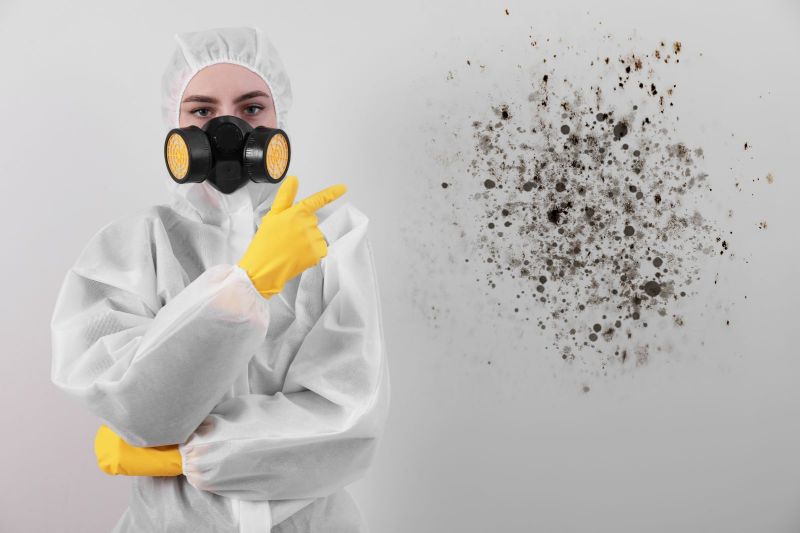A healthy home is the cornerstone of well-being, providing a safe and nurturing environment for individuals and families. One of the most common threats to a healthy living space is the presence of mold. Mold not only jeopardizes the structural integrity of a home but also poses serious health risks to its occupants. In this article, we will explore the importance of mold remediation and the steps homeowners can take to ensure a mold-free and healthy living environment.
Understanding the Impact of Mold on Health
Mold is a type of fungus that thrives in damp and humid conditions. While mold is a natural part of the environment, it becomes problematic when it infiltrates indoor spaces. Exposure to mold can lead to a variety of health issues, ranging from mild allergic reactions to more severe respiratory problems. Individuals with pre-existing respiratory conditions, such as asthma, are particularly vulnerable to the adverse effects of mold.
Common signs of mold-related health issues include persistent coughing, sneezing, throat irritation, and skin rashes. Long-term exposure to mold may also contribute to more serious conditions, such as chronic respiratory diseases and immune system disorders. Given the potential health risks associated with mold, it is crucial for homeowners to be proactive in identifying and addressing mold infestations promptly.
The Importance of Mold Remediation
Mold remediation is the process of removing mold from an indoor environment and preventing its future growth. Effective mold remediation is essential not only for preserving the structural integrity of a home but also for safeguarding the health of its occupants. Ignoring or neglecting mold issues can lead to a cascade of problems, including extensive property damage and escalating health concerns.
Mold remediation involves a comprehensive approach that addresses the root causes of mold growth, eliminates existing mold colonies, and implements preventive measures to mitigate the risk of future infestations. Professional mold remediation services are equipped with the expertise and tools needed to assess the extent of mold damage, identify the source of moisture that sustains mold growth, and implement effective remediation strategies.
Steps in Mold Remediation
- Assessment and Inspection: The first step in mold remediation is a thorough assessment of the affected areas. Professional inspectors identify the type and extent of mold present, assess the level of damage, and determine the source of moisture supporting mold growth.
- Containment: To prevent the spread of mold spores to uncontaminated areas, containment measures are implemented. This involves sealing off the affected area using plastic sheeting and negative air pressure to ensure that mold spores are not released into the air during the remediation process.
- Removal of Mold: The actual removal of mold involves the careful and systematic cleaning of affected surfaces. Depending on the severity of the infestation, specialized techniques and cleaning agents may be employed to ensure thorough mold removal.
- Moisture Control: Addressing the source of moisture is critical in preventing the recurrence of mold growth. This may involve repairing leaks, improving ventilation, and implementing measures to regulate indoor humidity levels.
- Restoration: After mold removal and moisture control measures are in place, the affected areas may require restoration. This could involve repairing or replacing damaged materials and ensuring that the space is returned to its pre-mold condition.
Preventive Measures for a Mold-Free Home
While professional mold remediation is crucial for addressing existing mold issues, homeowners can take proactive steps to prevent mold growth in the first place:
- Maintain Proper Ventilation: Ensure adequate ventilation in bathrooms, kitchens, and other areas prone to moisture buildup. Use exhaust fans and open windows to promote air circulation.
- Monitor Indoor Humidity: Keep indoor humidity levels between 30-50%. Use dehumidifiers in damp areas, such as basements, to control moisture.
- Promptly Address Water Damage: Address water leaks and damage promptly. Repair roof leaks, fix plumbing issues, and address any water intrusion immediately to prevent mold growth.
- Regular Inspections: Conduct regular inspections for signs of water damage, such as leaks, water stains, or discoloration on walls and ceilings. Address any issues promptly to prevent mold from taking hold.
A healthy home begins with a proactive approach to mold remediation. By understanding the impact of mold on health, recognizing the importance of professional remediation services, and implementing preventive measures, homeowners can create a living environment that promotes well-being and longevity. Mold remediation is not just about addressing visible mold; it's about ensuring the long-term health and structural integrity of the place we call home.

